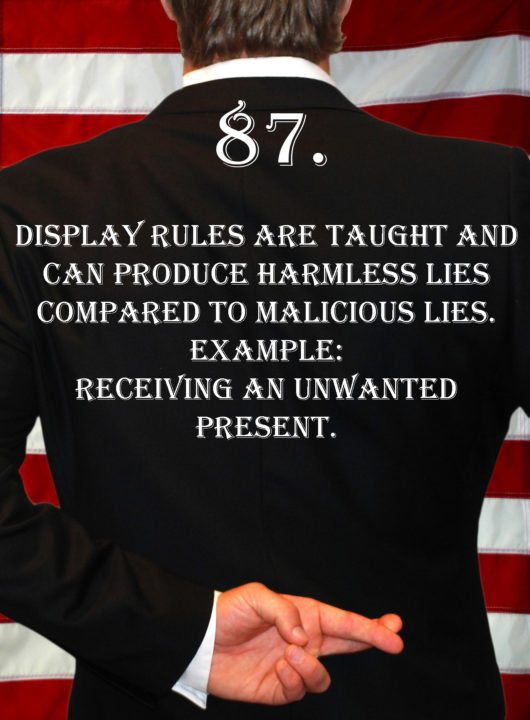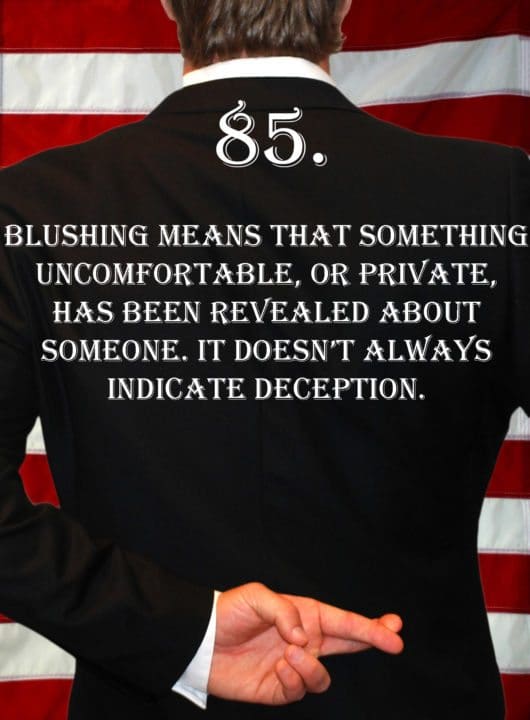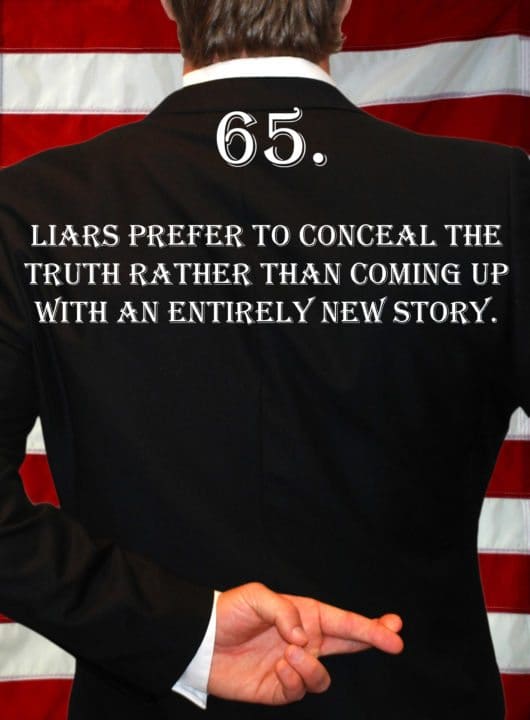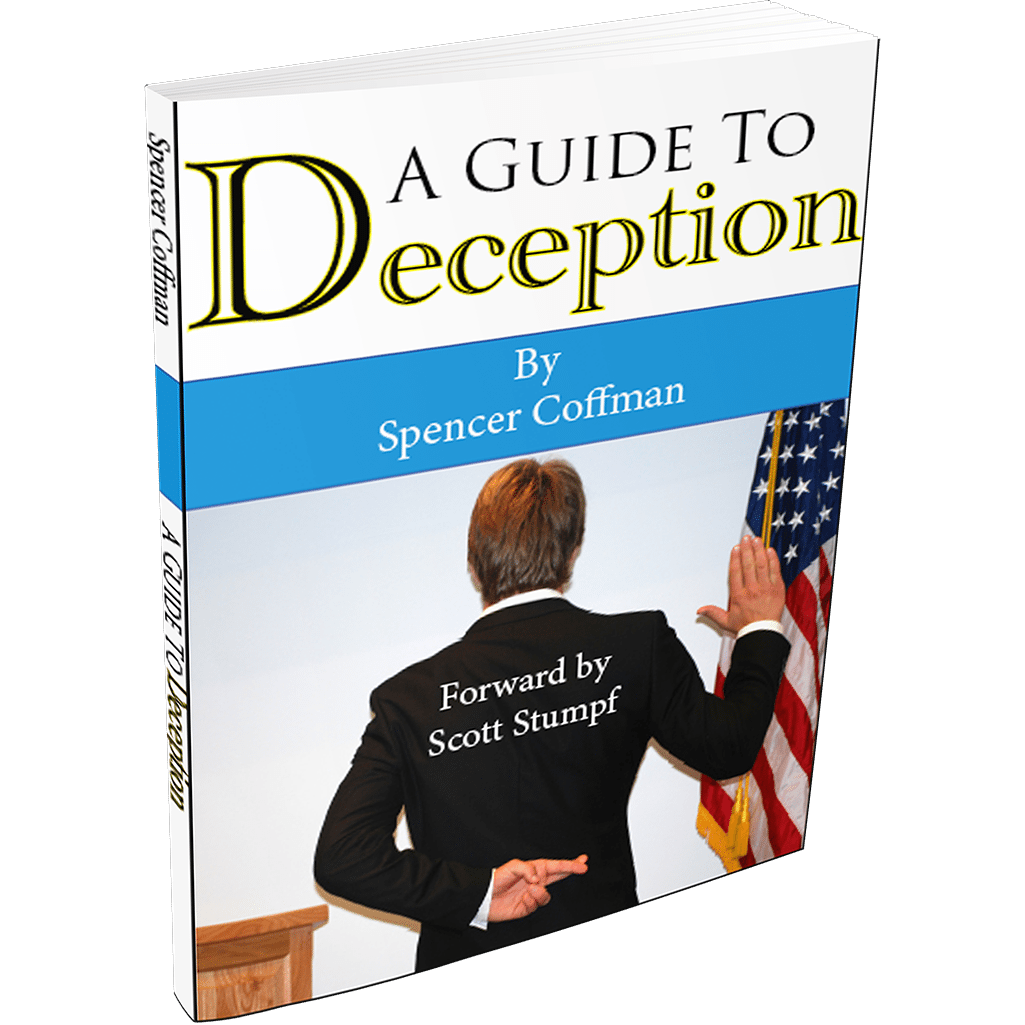
Deception Tip 87:
Display rules are taught and can produce harmless lies compared to malicious lies. Example: receiving an unwanted present.
Listen To The Podcast!
E87 – Display Rules – Deception Tips Podcast – Click Here To Subscribe
Podcast Transcript
Hello and welcome to the Deception Tips podcast where you will learn amazing cues to detect deceit that will help you read people like never before. I’m your host Spencer Coffman, let’s get started.
Hello and welcome to Deception Tip episode number 87. Last week, we talked about a somewhat tough tip or concept to understand. However, I really hope that you have had some time to think about it, to ponder it.
Maybe you’ve checked out the blog post for it and hopefully, you’ve taken a look at the Revised and Expanded Edition of the Deception Tips book or eBook, that has some more explanation of it there as well.
Also, you can check out the video on YouTube if you’d like more information. Anyway, Conceal and Falsify is what we spoke of last week. We said that emotions are harder to falsify.
Why? Because there are so many tiny muscles on the face, so these emotions, these emotional expressions or expressions of emotion are harder to falsify and they’re easier to conceal.
There are so many tiny muscles and this emotion just comes out like that, it’s easier to conceal. You can put a smile over it, you could fake a yawn, you could cover your face or your mouth with your hand. You could pretend to have something in your eye, meanwhile, you’re covering it up. There are so many things that you could do to conceal that instant micro expression.
They’re very difficult to falsify because most people don’t even know they exist, they don’t know how to read them, they don’t know how to see them, etc. On the other hand, body language is harder to conceal.
Why is it harder to conceal? Well, because you don’t know when it’s coming out. Body language that is unconscious, truthful body language is harder to conceal because if you knew of it, you’d just stop it.
You don’t know it’s being leaked because it’s unconscious, so the conscious doesn’t know it’s happening. It’s just slipping out there and usually, by the time the conscious figures it out, it’s already gone. So, it’s harder to conceal, it’s easier to falsify because you can simply fake it.
If you want to pretend you’re nervous you could bite your lips, you could pace back and forth, you could bounce your legs, you could do all kinds of stuff. You want to pretend to be defensive and withholding and angry, fold your arms, hunch your shoulders, put on a scrunched up face and people might think that you’re angry. It’s easy to falsify body language because we know what it looks like.
We know how our bodies move, we can move our arms without any issue. Our arms, our legs, our hands, our feet, they’re easy to move, we control them every single day. The micro-expressions on our faces that are indicative of emotion are harder. Therefore, remember emotion is harder to falsify and easier to conceal, body language is harder to conceal and easier to falsify.
Pay attention to that when you are in conversations with other people and start to notice the different signs and the different things on their bodies.
Think about whether or not it’s genuine or if it’s falsified, if it’s falsified, you may have a double lie going on. Not only are they lying about the body language or about whatever is going on but they’re also lying about whatever they’re saying, so it’s a two-faced lie, something to think about.
Today, we have another deception tip, this one is similar, it is a general rule regarding conversation and lying, it’s something that is taught to people. In essence, children are taught to lie, people are taught to lie, and we don’t necessarily automatically know how to lie. Of course, we don’t need to be taught how to be bad, kids need to be taught how to be good.
Therefore, they don’t have any problem lying when they’re little, they may have that inherently inside of them, this evil with them. Their heart is evil beyond all things, we need to be taught how to be good, so lying may come naturally. However, when little kids lie, it’s very obvious, they will be caught, so they may know how to lie, they know what lying is.
They are taught to be better liars by parents and grandparents and other people in their lives. If you don’t believe this, take a look at some research, it’s all over the place out there. They have studies with kids, lying with adults, teenagers, and old people as in the senior citizens. Sorry if you are a senior citizen, I don’t mean to be offensive when I said old people, if you are offended by that lighten up really.
I mean, it’s not that I’m meaning to be offensive, it’s a fact, young to old, we get better at lying as we age. Take a look at the studies, 70-year-old people are really good at lying compared to seven-year old’s. Google it and it will come up, otherwise, you can take a look at my research paper or A Guide to Deception, all the research is documented in that book.
Today, that’s what we are going to be talking about, those display rules. Here it is, Deception Tip number 87. Display rules are taught and can produce harmless lies compared to malicious lies. For example, receiving an unwanted present. Here it is again, Deception Tip number 87. Display rules are taught and can produce harmless lies compared to malicious lies. For example, receiving an unwanted present.
So, what does this mean? Harmless lies, malicious lies, a lie is a lie. Yes, a lie is a lie, some lies though, are more harmful than others. For example, in this instance, receiving an unwanted present. So, grandma knits you a nice sweater, you don’t want a sweater with a bird on it, you hate it, they’re hot, they’re itchy, they’re terrible.
However, when your child receives that sweater or when you receive that sweater, your parent tells you, ‘now, what do you say?’ ‘Thank you, I really like it, grandma.’ You just taught that child how to lie or that parent just taught their kid how to lie. They learn how to be a better liar in that instance, they’re learning social conditioning or display rules, harmless lies.
‘How are you today?’ ‘I’m really good, thank you’. You’re not good, those types of things, they’re harmless lies. Malicious lies have a consequence, covering up a murder, and lying about stealing, they are the cover-ups for greater sins and greater errors. We’re going to talk a lot more about this and about the differences and give you some examples coming up right after this.
It doesn’t take long to read and it’s filled with tips on detecting deception. It’s Spencer Coffman’s Deception Tips eBook and contains over 100 cues to detecting deception. Available on Spencer Coffman’s website or any major retailer.
Welcome back to Deception Tip number 87 where we are talking about display rules and how kids are brought up and are taught to become better liars through society, their parents, grandparents, and others around them. In addition, we have two kinds of lies that we were discussing, harmless lies and malicious lies.
If you’ve read A Guide to Deception, you will notice in there, maybe you remember, maybe you don’t, but in there, we talked about low stake lies and high stake lies. Low-stake lies are those polite or social lies, those are exactly what we mean when I’m saying harmless lies. If someone discovers what the lie is, the worst-case scenario is an embarrassment.
Hey, you’re right, I really don’t like your haircut, I think it looks stupid or your shirt was inside out, I’m sorry I said, yeah, you look good but I didn’t want to embarrass you, those types of things. The big consequence of those lies would be embarrassment or you may seem like a jerk or insensitive.
However, these malicious lies, which are also high stake lies, these are serious business. These types of lies are things like national security, life, and death, spies, or espionage people. They tell lies like these in order to save lives or get other people killed or do what they need to do all for some greater cause or greater good.
If you take a look at other high-stake lies, they might be things like in the movies or TV shows where people are lying about their whereabouts on murder investigations.
People who commit perjury or lie on the stand to the jury or anything like that, are high stakes. These consequences are serious, people could die, people could end up in jail, lives could be ruined, blackmail, extortion, things like that.
High stake lies have the potential to ruin lives, if you get caught up in one of these, you are in for a world of hurt. Therefore, it’s very important that you know how to read people and detect this deception so that if there’s something like this going on around you, you can spot it immediately. You can avoid all of those issues and all of those consequences, if possible.
You can see them ahead of time and you can jump to the conclusion right away, you can get there a lot better, and you can save yourself that heartache. Low stake lies, social lies, polite lies, harmless lies, they are alright.
It’s not good to lie, no, but those lies, don’t really mean anything, they don’t matter. Therefore, if they don’t matter and they don’t mean anything why would you tell that as a lie to begin with?
Well, you shouldn’t, you should not lie, you should tell the truth but in certain circumstances, you may not think about it, you may not remember it. It’s a white lie, you tell yourself, try not to, try to be honest as much as possible but don’t be a jerk, don’t hurt people’s feelings intentionally.
If you know there’s a little kid and they say, do you like my sweater or did you like my dancing or my performance or my joke? You say, no, it absolutely sucked, it was terrible, the worst joke I’ve ever heard, you’re going to really crush that little kid. Why would you do that? That’s terrible. You could say, you know what, I thought it was a good joke because you told it but if anyone else told it I don’t think I would like it.
Now you’ve been truthful, you don’t like the joke but you’re not hurting their feelings. You need to be conscious of what you’re saying and what you’re talking about. If we all try to say the truth a little bit more, we tell the truth a little bit more, we’re more conscious of these social or so-called white lies or harmless lies, this world could change.
Then when we notice these high stake lies, we will be able to see these signs of deception all around us. One important thing to mention is that some people, get so comfortable telling these white lies or these low stake lies that they may not even exhibit signs of deception when they’re told anymore. It’s become a natural part of them, it’s almost like they’re a pathological liar.
However, pathological liars, they’re one level up, they’re a little bit to the extreme. They could probably tell high-stake lies without any ramifications, nothing, no problem, no issue. Those types of people are perfect in the espionage world because they can lie without any problem. Remember lies are trained into people and there’s another perfect point for that.
If you’re in the espionage world, you’ve no doubt been taught how to be a better liar. Why? Because your life depends on it and so do the lives of other people, those who you’re protecting. You’ve been trained, coached, and taught how to become a better liar, how not to exhibit these signs of stress, and how to beat the polygraph. How to stop and inhibit these body languages and this physiological emotion inside of you, liars can be trained.
We know this because, as I said in that example, you teach your kids to lie when saying, how do you feel today? I’m good or do you like my haircut? Yes. How did you like that present? It was good. How was the food? It’s great. You’re not going to say no, this food is nasty, that’s not polite, so you’re going to lie to be polite. They’re taught to our children, they’re taught everywhere, those little lies.
As people get older, they’re taught more and more, they get more and more experienced, therefore, they become better liars. You can start to notice all of these signs of deception if you pay attention to them on yourself and on others, I encourage you to continue to do so. Always pay attention, keep learning, never stop, don’t get rusty, you stay sharp or you get sloppy.
Therefore, continue listening to Deception Tips podcasts, and also go back and listen to the episodes again. This is episode number 87, which means 87 weeks ago you heard episode number one, that’s a long time ago. Do you remember it? Go back, listen to them again and again, and stay sharp.
So, I want to thank you for listening to this week’s episode of the Deception Tips podcast. I hope that you’ll share it with your friends, subscribe to the feed and check out the deception tips videos, the blog and take a look at the books I have available, and, as always, tune in next week for a new deception tip.
Video Transcript
Hey guys, my name is Spencer Coffman, thank you for watching the deception tips videos. They’re all about teaching you how to read people and detect deception so that you will be able to tell if someone is lying to you. Today, we are going to talk about something that happens every single day, it’s social or display rules that you see in everyday interaction and conversation.
They’re somethings that are taught to us as we grow up, they’re taught through our culture, through our parents, education, etc. However, a lot of times they are taught as lies so for example, these things that we’re taught, instead of being taught these rules we’re taught to lie. It’s being taught to be polite, to be deceptive but without offending anyone.
We’ll talk more about it coming up later but for now here it is, this is Deception Tip number 87. Display rules are taught and can produce harmless lies compared to malicious lies. Example: Receiving an unwanted present. So, these display rules are taught, they produce harmless lies, these lies are harmless, they’re social, they’re polite lies, they have no bearing, they’re not malicious.
A malicious lie would be something like lying about a crime or covering up something, these are the lies that we want to find out. These harmless, social, polite lies from display rules, these are lies that really don’t matter but nonetheless it is lying. So, when you hear statistics like you probably lie 200 times to 2,000 times a day, wow, those are big numbers.
The average person lies a hundred times in ten minutes of conversation, these statistics are a wide range but when you hear things like that, if it’s 2000 times, they could be counting all little social and display lies. How are you doing today? Good. Well, you’re really not good because yesterday you just got in a car accident or something in your back really hurts.
So, are you really good or no but you just say good because the other person probably doesn’t want to hear about your back and your car accident and all this stuff? So, you say good, that’s a lie but it doesn’t really matter. In the example we gave, receiving an unwanted present, this is a huge one.
What are kids taught to do from a very young age when that grandmother gives them a knit sweater instead of the remote-control car? “Thank you, grandma, I really like it.” You don’t like it, you hate it but the parents teach the kid to be polite and say to the grandma so that the grandma doesn’t feel bad, that they like the gift or whether it’s grandma or anybody.
We’re taught to be polite, do you like my hair? How do you like my haircut? Well, are you going to tell me it’s terrible or are you going to say, well, yeah, it’s pretty good and even though you may not like it? How do you like the shirt I’m wearing? Does this dress make me look fat? Why would I wear a dress, but you know it’s an example, so those types of circumstances, they’re very touchy areas but in some situations does the truth matter in that instance.
If you want to be truthful all the time then yes, the truth matters, but for those polite and social, they’re called harmless lies, the truth is not what we’re going after in that situation. Those truths will serve to embarrass people or call them out or make them feel bad. Why would you want to go through life constantly making people feel bad about things that they do? It just doesn’t seem like a good way to live but keep in mind that we are taught these things and they are harmless lies rather than malicious lies.
So, when you are detecting deception, it is your goal to determine whether the stuff you’re seeing is a harmless or a malicious lie. The unconscious is still going to display these truthful behaviors whether or not it’s a harmless or malicious lie, it’s still going to happen. It’s up to you to discern whether or not that lie is something that doesn’t matter, or it does matter and that’s on you.
So, if this is your first time watching these videos, I’d love to have you subscribe to the channel on YouTube. Feel free to comment with any questions you may have as well. Also, if you’d like some more information, we’ve got books, podcasts, and blog posts all available on spencercoffman.com that are dedicated to teaching you exactly what every body is really saying.
Until next time.






